If your preschool student is not ready to read yet, but you want to help your student get ready, what can you do?
One simple thing you can do together is learn nursery rhymes.
I know. I know. It sounds a little bit unbelievable, but the research tells us that kids who learn to rhyme are kids who learn to read. Nursery rhymes are a great way to put your child on the road to reading.
If you want a little help with the task, try Nursery Rhymes Emergent Readers.
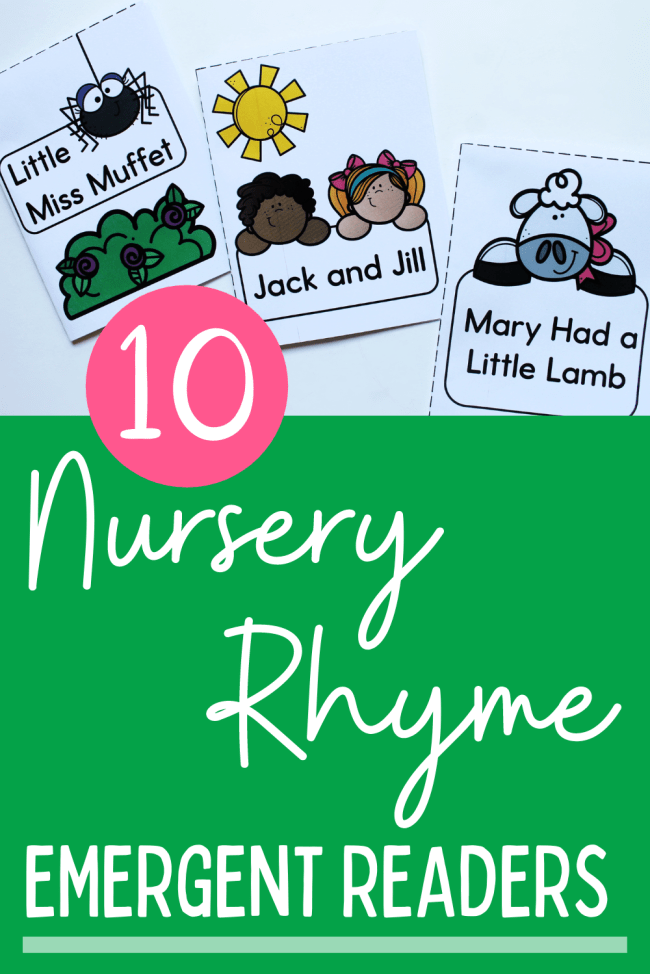
Why Do We Teach Preschoolers Nursery Rhymes?
One day after homeschool co-op a fellow homeschool mom asked me, “Why are nursery rhymes important? Do they really benefit our kids? They seem ridiculous.”
I stopped and pondered her question. Even though I had been teaching my son nursery rhymes since he was a baby, I didn’t have an answer. Are there more important things to fill kids’ brains with?
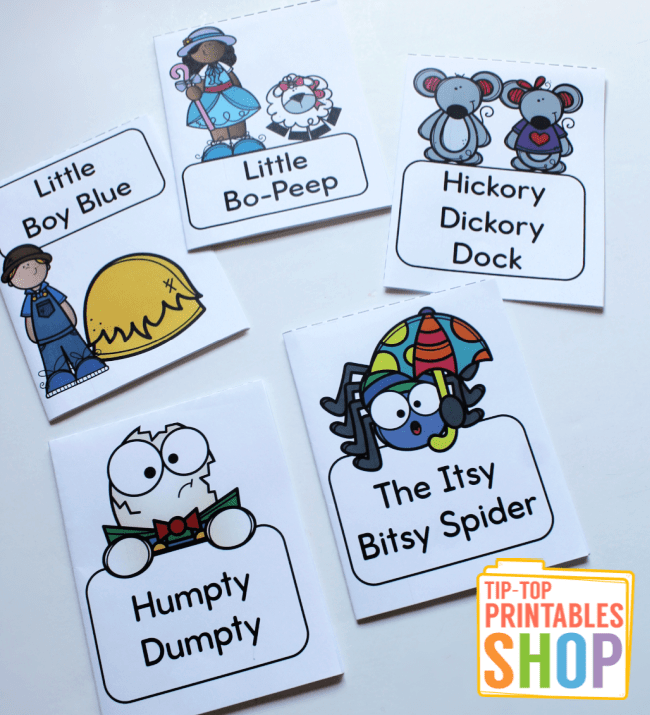
As I began to research, I found that nursery rhymes are not just fun little songs to learn with your toddlers. Nursery rhymes have value and can put your child on the road to reading.
In Reading Magic, Mem Fox makes this claim:
“Experts in literacy and child development have discovered that if children know eight nursery rhymes by heart by the time they’re four years old, they’re usually among the best readers by the time they’re eight.”
Mem Fox isn’t the only professional who believes that rhyming develops and boost literacy. Multiple studies by other researchers have produced the same information: good rhymers turn out to be good readers.
Nursery rhymes have been used to help young children learn languages for centuries. They can also be used to teach children about numbers, colors, and shapes.
Nursery rhymes are a great way to strengthen the skills that children need for school success. They improve phonological processing, literacy, and vocabulary skills.
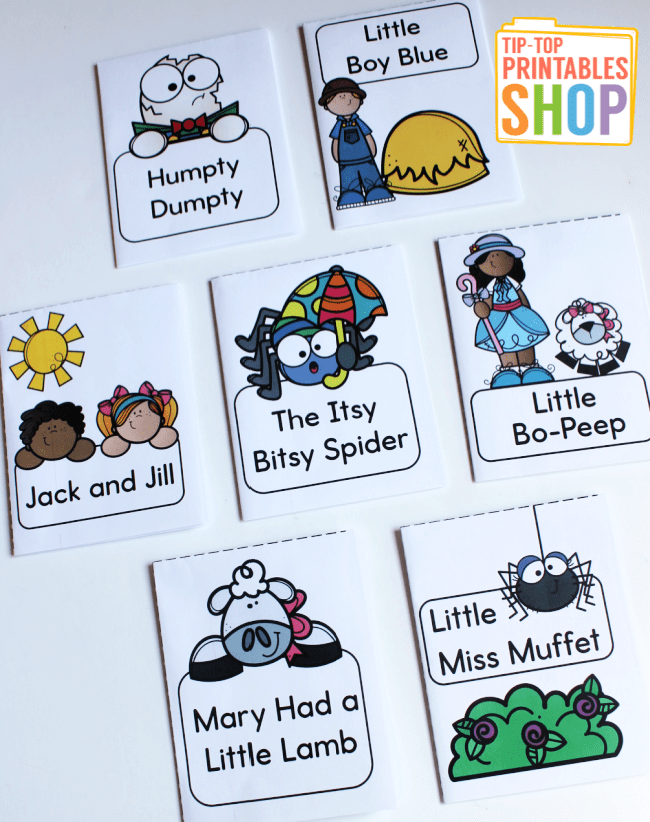
Benefits of Nursery Rhymes for Emergent Readers
Nursery Rhymes Develop Language and Reading Skills
One benefit of nursery rhymes is language development. Rhyme is an easy, engaging way to teach new vocabulary words.
Additionally, rhyme allows young learners to develop phonemic awareness and learn some of the language patterns that they will need to become fluent readers.
Humpty Dumpty sat on a wall. Humpty Dumpty had a great fall.
When young children hear this repetitive, rhyming phrase, they hear the sounds vowels and consonants make. They learn how to put these sounds together to form words.
As you recite nursery rhyme words to your child, you choose certain words to emphasize. Read this snippet:
All the king’s horses and all the king’s men, couldn’t put Humpty together again.
You would probably emphasize all when you read that sentence. You use pitch, volume, and voice inflection. Your child will pick up on this and mimic you.
Nursery Rhymes Build Confidence
Nursery rhymes are usually composed of short, simple sentences that are easy to repeat. This helps your child to memorize them—not only does this aid in developing memory, it also builds your student’s confidence as they begin “reading” books to you.
Nursery Rhymes Encourage Emotional Development
You might not think of this benefit right away when you consider nursery rhymes, but nursery rhymes provide an excellent opportunity to develop emotional intelligence.
Consider Jack and Jill. What happens to them? Ouch! You can discuss their plight with your students and your students can gain empathy.
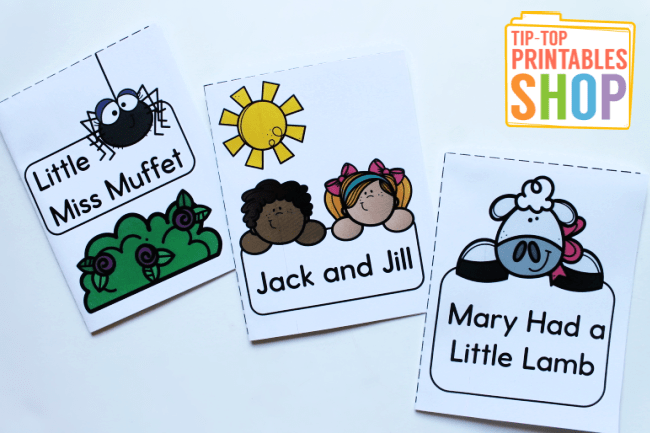
What about Little Miss Muffet? Have your students ever felt fear? This simple nursery rhyme can pave the way for discussions about scary things and fear.
How did Little Bo-Peep feel when she couldn’t find her sheep?
What about Mary? Did it make her happy that the lamb loved her?
You can use nursery rhymes to help your student process emotions.
Nursery Rhyme Emergent Readers
Are you ready to teach with nursery rhymes?
To make things easier, I’ve created a set of ten Nursery Rhyme Emergent Readers. Your little learner will love having a set of books that are easy to hold and manipulate.
Memorize the rhymes together, and then let your student read them to you.
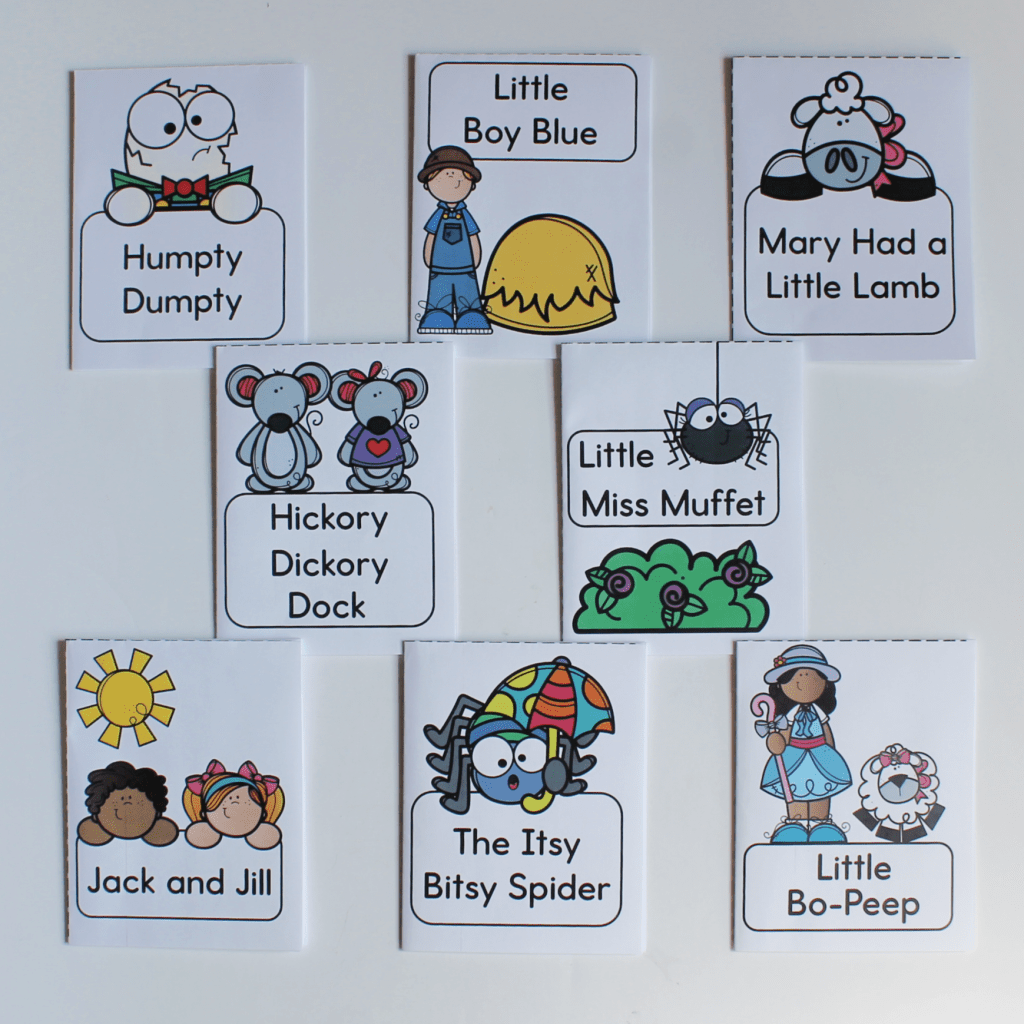
These ten nursery rhymes are included in this emergent reader set:
- Baa, Baa, Black Sheep
- Hey Diddle Diddle
- Hickory Dickory Dock
- Humpty Dumpty
- The Itsy Bitsy Spider
- Jack and Jill
- Little Bo-Peep
- Little Boy Blue
- Little Miss Muffet
- Mary Had a Little Lamb
The set of ten books also includes a set of ten rhyming wheels.
Because rhyming is important, I decided the books should have a matching rhyming activity.
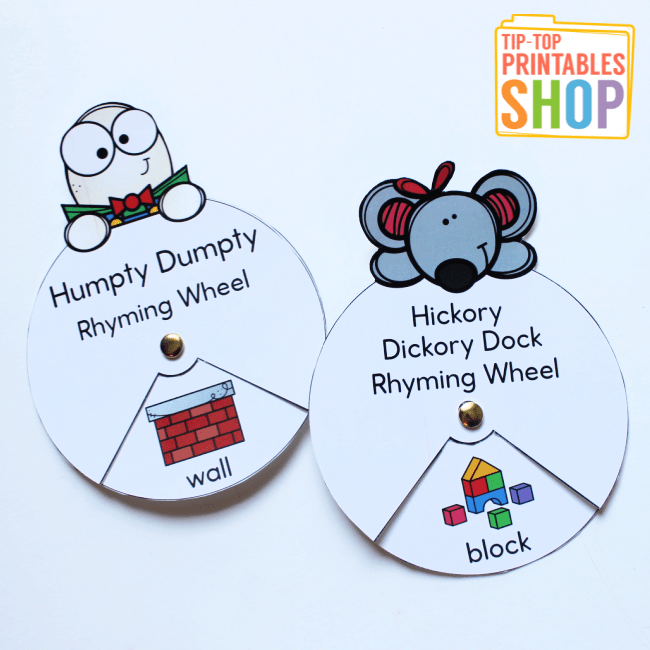
After you and your student learn the nursery rhyme together, take some time to create one of the wheels and let your student read through the rhyming words.
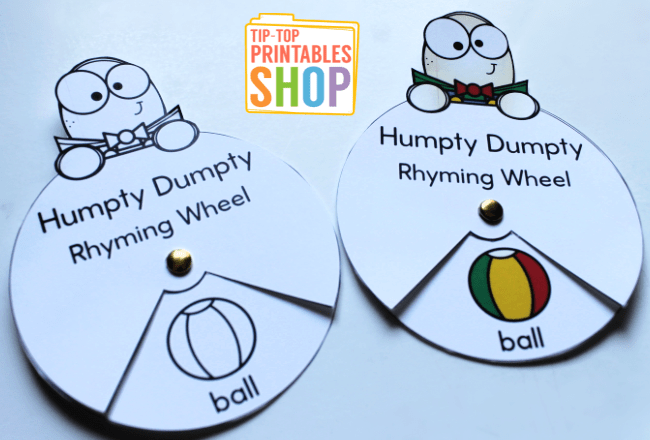
Additionally, the books and the wheels are included in a color version as well as a black and white version. Simply choose the option that works best for your students.
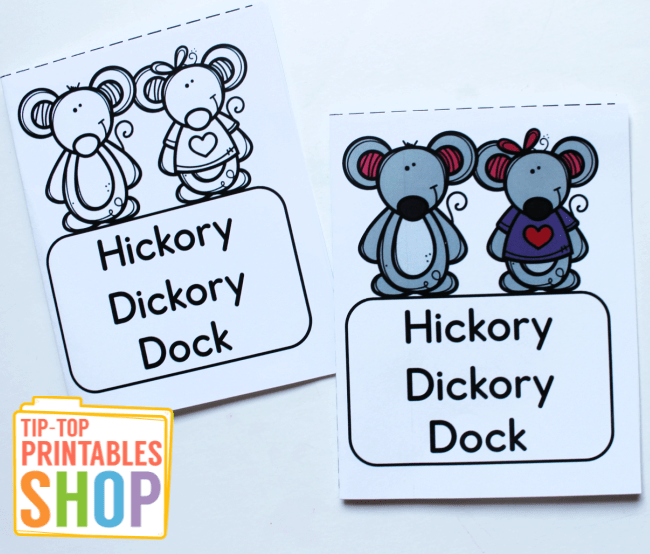
Get a Set of Nursery Rhymes Emergent Readers
Grab your set of Nursery Rhymes Emergent Readers and Rhyming Wheels from the Tip-Top Printables Shop, or purchase with the buy button below.
More Emergent Readers
You can read more about emergent readers (and snag a few freebies) in these posts:

Leave a Reply